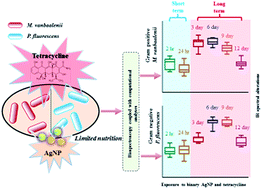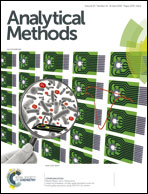Spectrochemical determination of unique bacterial responses following long-term low-level exposure to antimicrobials
Abstract
Agents arising from engineering or pharmaceutical industries may have significant environmental impacts. Particularly, antimicrobials not only act as efficient eliminators of certain microbes but also facilitate the propagation of organisms with antimicrobial resistance, giving rise to critical health issues, e.g., the bloom of multidrug-resistant bacteria. Although many investigations have examined microbial responses to antimicrobials and characterized relevant mechanisms, they have focused mainly on high-level and short-term exposures, instead of simulating real-world scenarios in which the antimicrobial exposure is at a low-level for long periods. Herein, we developed a spectrochemical tool, attenuated total reflection Fourier-transform infrared (ATR-FTIR) spectroscopy, as a high-throughput and nondestructive approach to interrogate the long-term effects of low-level antimicrobial exposure in bacterial cells. Post-exposure to nanoparticulate silver (AgNP), tetracycline or their mixtures for 12 days, Gram-positive (Mycobacterium vanbaalenii PYR-1) and Gram-negative (Pseudomonas fluorescens) bacteria exhibited distinct IR spectral alterations. Multivariate analysis coupled with multivariate regression trees (MRT) indicates nutrient depletion and exposure time as the primary factors in bacterial behaviour, followed by exposure category and bacterial type. Nutrient depletion and starvation during long-term exposure drives bacterial cells into a dormant state or to exhibit additional cellular components (e.g., fatty acids) in response to antimicrobials, consequently causing a broader range of spectral alterations compared to short-term exposure. This work is the first report highlighting the more important roles of exposure duration and nutrient depletion, instead of treatment regimens of antimicrobials, in microbial responses to low-level and prolonged environmental exposures.



 Please wait while we load your content...
Please wait while we load your content...